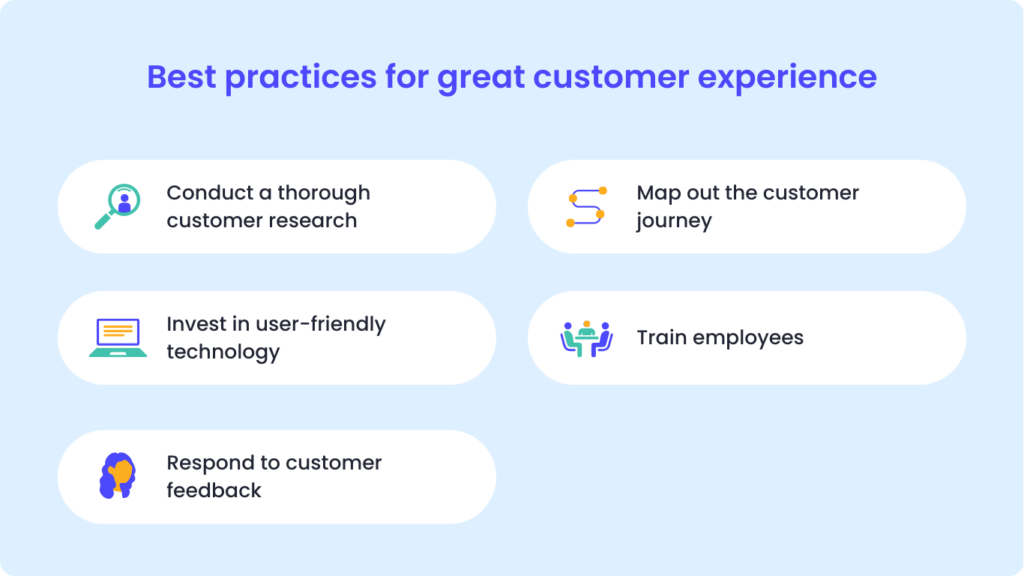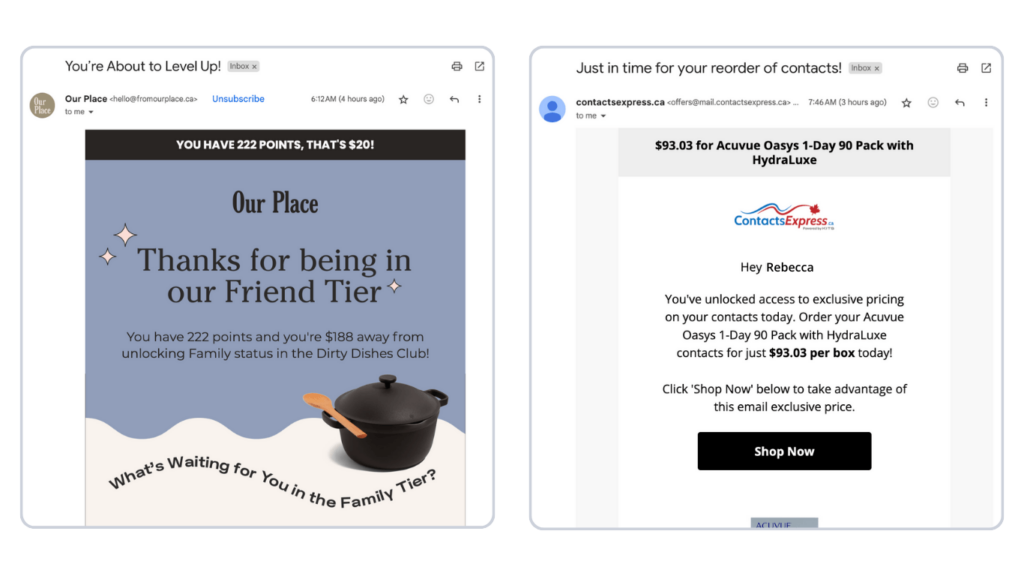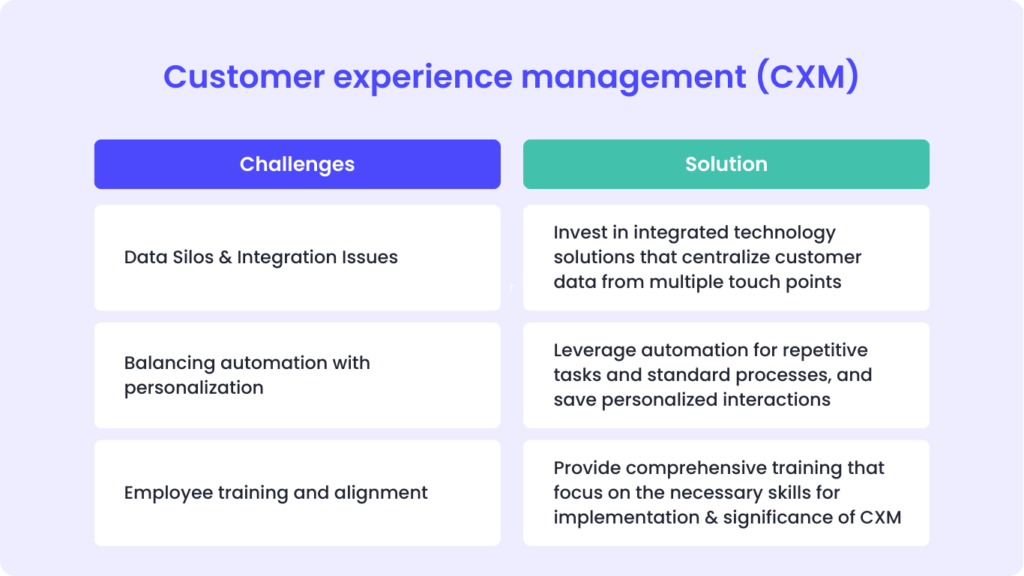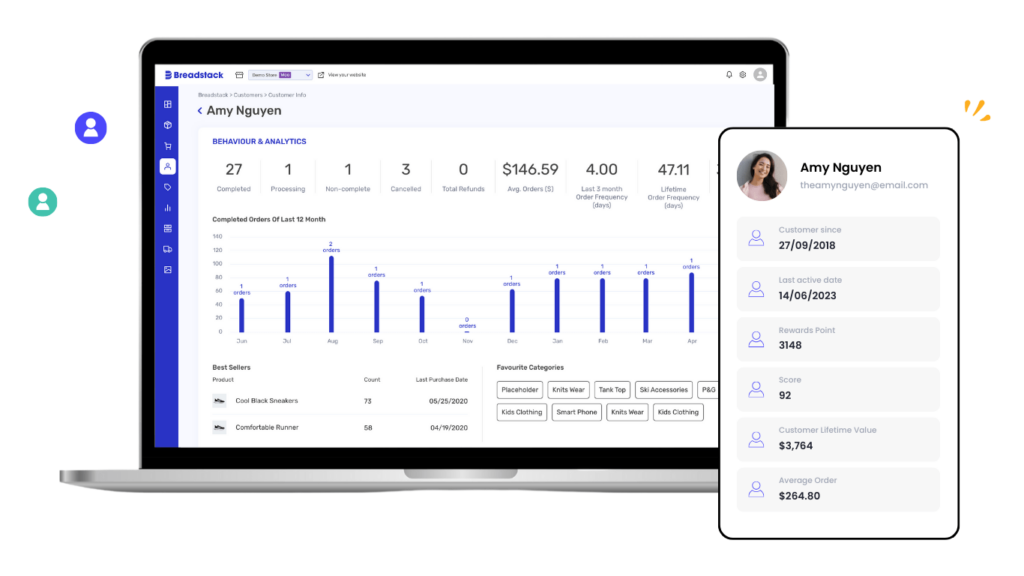How do small businesses stand out in a crowded marketplace and keep customers coming back for more? Sometimes, the fact that they sell unique or great-quality products is a big part of the answer. However, it’s usually not the whole story.
Businesses are much more than just products. Amazingly, 88% of customers report that the customer experience a company provides matters just as much as the products it sells.
“Customer experience” is a complex idea that can be hard to pin down, let alone work with. In this article, we’ll introduce you to the concept of customer experience management – a structured approach to making your customers happy while boosting your sales, invigorating your brand, and setting you up for long-term growth.
What is customer experience management?
Customer experience management (CXM) boils down to a simple idea: satisfied customers are more likely to become loyal advocates of a brand.
There’s no single trick to keeping customers happy. Rather, CXM is about taking a holistic approach, striving to create positive experiences at every touch point in the customer journey.
CXM encompasses the strategies, processes, and technologies business use to optimize every interaction a customer has with their brand. It’s a far-reaching concept that ties together customer service, product quality, marketing, and user interface design.
Why is customer experience management important?
There are several excellent reasons to prioritize CXM. First and foremost, it fosters customer loyalty, encouraging repeat purchases and positive word-of-mouth recommendations, which are vital for business growth.
In fact, in a recent survey, 95% of respondents stated that a positive customer experience impacts their loyalty to a brand.
Providing exceptional experiences can also help you stand out from competitors. Even if your products aren’t unique in and of themselves, fostering a shopping environment that makes customers feel good can help you carve out a niche in the market.
Thirdly, CXM allows you to identify pain points in the customer journey. In the process of developing and honing your approach, you’ll learn about what your customers enjoy – and where and why they might be dropping off. Armed with those insights, you can streamline processes, optimize your user interfaces, and improve overall efficiency.
Last but not least, a well-executed CXM strategy gives you a bit of a buffer against occasional hiccups. Satisfied customers are more forgiving of the odd mistake or glitch. They’ll be more likely to overlook minor issues, reducing the risk of negative reviews or complaints.
Ultimately, investing in CXM not only leads to increased customer satisfaction and retention but also drives long-term profitability and sustainability for your business.
Why is customer experience management important?
Customer Relationship Management (CRM) is a vital component of CXM. However, CXM encompasses a broader scope.
CRM revolves around managing and nurturing relationships with customers by organizing and analyzing data on interactions and transactions. CRM systems allow you to track customer information, communication history, and sales opportunities. Usually, the primary goal of CRM is to drive sales and retention.
Proponents of CXM go beyond relationship-building, aiming to understand and improve every interaction a customer has with a brand throughout their journey. It’s about emotional connections, brand perception, and overall satisfaction.
Effective CXM draws heavily on insights from CRM – but it also takes into account other business areas such as interface design and product quality, with a focus on how these factors help shape the customer experience.
How to create a great customer experience
CXM might sound ambitious, but that’s actually the point. You’ll never achieve total perfection across every customer interaction. What’s important is that you stay focused on, and responsive to, your customers’ needs, expectations, and feedback.

If you’re getting ready to lay out a CXM strategy, here are a few best practices to keep in mind:
- Conduct thorough customer research to understand needs, preferences, and pain points.
- Map out the customer journey to identify touchpoints and areas for improvement.
- Invest in user-friendly technology and data analytics tools to track and analyze customer interactions.
- Train employees to deliver consistent, exceptional service and personalize interactions.
- Actively solicit and respond to customer feedback to continuously refine and enhance the customer experience.
Customer experience management strategies
As a goal, improving customer experiences has a very broad scope. Integrating one or more of these angles into your strategy can help guide and structure your approach.
Personalization and segmentation
Implementing personalized marketing strategies based on customer data can work wonders for your customer experience.
By segmenting customers according to their preferences, behaviors, and demographics, you can tailor offerings, communications, and promotions to better meet individual needs.
This approach fosters a sense of relevance and connection, ultimately encouraging customers to engage more with your brand.

Omni-channel integration
Ensuring a seamless experience across all channels – online, mobile, social media, and physical stores if applicable – is essential for CXM success.
Customers expect consistency and continuity as they transition between different touchpoints. Integrating these channels allows businesses to provide unified messaging, access to information, and seamless transactions, regardless of which platform they’re using.
This integrated approach enhances convenience, accessibility, and overall satisfaction for customers.

Proactive issue resolution
Anticipating and addressing customer concerns before they escalate is crucial for CXM.
Focus on proactive customer service strategies such as predictive analytics, automated alerts, and self-service options. This way, you can identify potential issues early and resolve them efficiently.
By demonstrating that your business is attentive and responsive, you can mitigate negative experiences, strengthen customer relationships, and encourage loyalty and advocacy in the long run.
Challenges in customer experience management
The holistic nature of CXM means that devising and carrying out your strategy is a “whole business” undertaking. Unsurprisingly, this is likely to stir up a few challenges.

Data silos and integration issues
Businesses often struggle with disparate data sources and systems, making it challenging to gain a comprehensive view of the customer journey.
To overcome this challenge, invest in integrated technology solutions that centralize customer data from multiple touch points.
Implement robust data management practices, ensure compatibility between systems, and prioritize interoperability when selecting your tools.
Employee training and alignment
Ensuring that employees across departments understand the importance of CXM and are equipped with the skills to deliver exceptional customer experiences can be a challenge.
To address this, provide comprehensive training programs that emphasize the significance of CXM and impart the necessary skills for implementation.
Foster a customer-centric culture by aligning incentives, setting clear expectations, and encouraging collaboration between teams to prioritize customer satisfaction.
Balancing automation with personalization
While automation can streamline processes and improve efficiency – vital for exceptional customer experiences – personalization is just as important in making a lasting impression.
So, how can you strike a balance between the two? Leverage automation for repetitive tasks and standard processes, and save personalized interactions for moments that matter most.
Figuring out which moments call for each approach might take trial and error. This is an excellent opportunity to solicit feedback from customers. Their survey responses and comments can help you figure out which experiences should be ultra-efficient and which should feel personal.
Leveraging customer experience management software

The right customer experience management software can make all the difference in turning CXM from an overwhelming idea to something concrete and manageable.
Customer experience management software collects and consolidates data from sources like social media, websites, emails, and customer service interactions to provide insights into customer behavior, preferences, and satisfaction levels.
When choosing CXM software, keep in mind that a range of employees may interact with it from various departments, and they could have varying levels of technical expertise. Look for user-friendly interfaces that make it easy to navigate and interpret data.
Scalability is important, too. You might have limited customer data at the moment, but – if all goes to plan – how might your needs be different one, two, or five years from now? Switching systems is a hassle, so make sure you choose a solution that can grow alongside you.
Make sure you also give serious thought to integrations. Your software should seamlessly connect with existing systems like CRM platforms, marketing automation tools, and customer service software to provide a holistic view of the customer journey.
Meanwhile, customizable reporting and analytics features ensure you can tailor insights to your specific goals and KPIs. These features help you stay on track with data-driven decision-making.
Lastly, look for robust security features that ensure sensitive customer data is protected from unauthorized access or breaches, safeguarding customer trust and compliance with privacy regulations.
The customer experience journey
Businesses use customer journey mapping to visualize and understand the entire process a customer goes through when interacting with their brand, from initial awareness to post-purchase support.
It involves identifying and analyzing each touchpoint or interaction a customer has with the business across different channels and stages of the journey. Customer journey maps typically outline the customer’s actions, emotions, motivations, and pain points at each touchpoint, providing valuable insights into the overall customer experience.
In CXM, customer journey mapping plays a pivotal role in guiding strategy development and decision-making. It helps you gain a holistic view of the customer experience, identify opportunities for improvement, and prioritize initiatives that enhance satisfaction and loyalty.
Once you’ve sketched out your customer journey, build on it by incorporating these four elements as pillars of your CXM strategy.

Source: Example of retail customer journey from Delighted
- Identify pain points – Pinpoint areas of friction or dissatisfaction at each touchpoint and take steps to address them, whether through process improvements, technology enhancements, or better training for staff.
- Personalize interactions – Tailor communications and offerings to meet the specific needs and preferences of individual customers, leveraging data and insights gathered throughout the journey.
- Streamline processes – Simplify and streamline interactions to reduce customer effort and make it easier for customers to achieve their goals, whether it’s making a purchase, seeking support, or providing feedback.
- Provide consistent messaging – Ensure consistency in messaging, branding, and service delivery across all touchpoints to build trust and reinforce your brand’s identity throughout the customer journey.
By optimizing touch points along the customer journey, your business can create more seamless, cohesive experiences that drive customer satisfaction, loyalty, and advocacy.
Privacy and security in customer data
Data privacy and security may not be the most glamorous aspect of CXM, but it directly impacts trust and loyalty – making it paramount in managing customer experiences.
Mishandling or breaching customer data can lead to loss of credibility, legal consequences, and severe damage to brand reputation.
To comply with data protection regulations and ensure data security, all businesses should:
- Obtain explicit consent for data collection and processing
- Implement robust data encryption and access controls
- Regularly update security measures and conduct risk assessments
- Train employees on data handling procedures and privacy compliance
- Transparently communicate data practices to customers
- Continuously monitor and audit data practices for compliance and security
By prioritizing data privacy and security, you uphold customer trust and safeguard sensitive information. This lays important groundwork for positive experiences and long-term relationships.

Your path to growth through customer experience management
It’s a well-established fact that customers value positive experiences when making purchase decisions. CXM may be far-reaching, but when practiced well, it can give your business an unshakable foundation on which to build and grow.
The right software partner can set you up for CXM success by providing powerful, intuitive tools to learn about your customers and operations, and the right features to implement your strategy.
Reach out to Breadstack for a free demo today.

